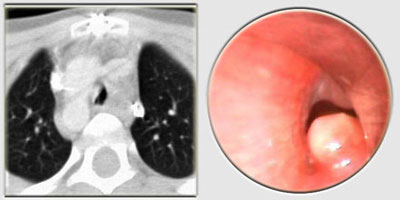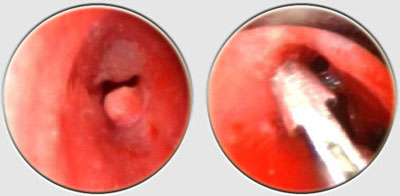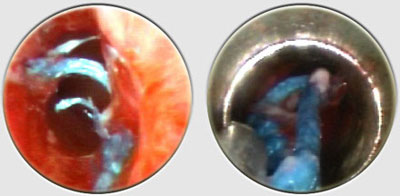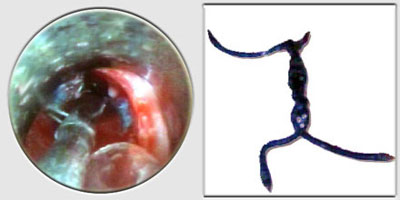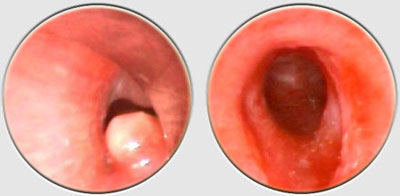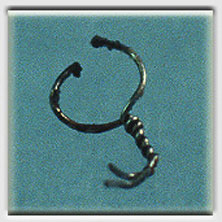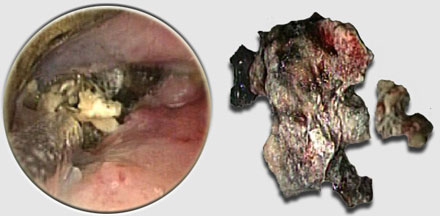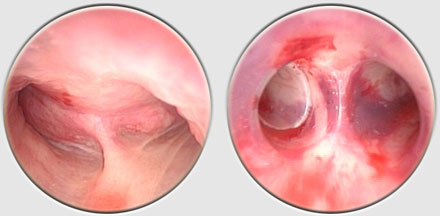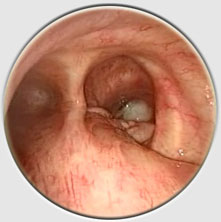 |
Index >
Indications > Miscellaneous |
Miscellaneous |
|
The infant’s trachea is obstructed by a large anterior granuloma which affects 80% of the airway lumen. The series of images illustrates the cause and treatment of this granuloma. The biopsy forceps is generally inadequate, but the sutures can be sectioned with the endoscopic scissors or the laser. The metal suture shown, was cut by two YAP laser discharges using high power (40 watts).
They should be approached with great caution given the significant risk of bleeding. An example of extrinsic compression of the airway by tuberculous adenopathy is seen to the right, while an aortic aneurysm obstructs the entire tracheo-bronchial tree on the left.
Adequate drainage of the cavity coupled with careful local endoscopic treatment are essential. All sutures must be resected, followed by irritation of the entire bronchial wall by whatever means available in order to cause inflammation and tissue retraction. We have obtained good results combining nitrate and laser therapy in these patients, although multiple sessions are often necessary. |
|
move
up
|
move
down
|
|
previous
|


